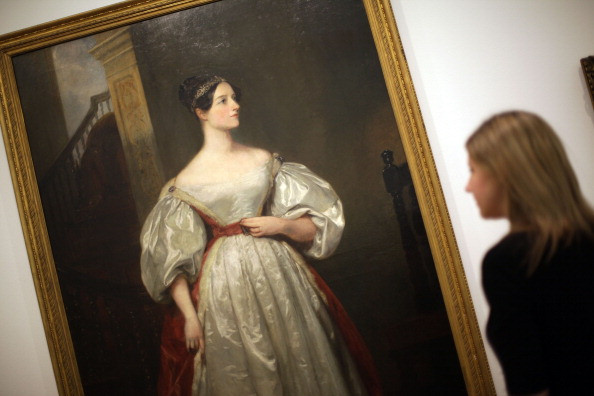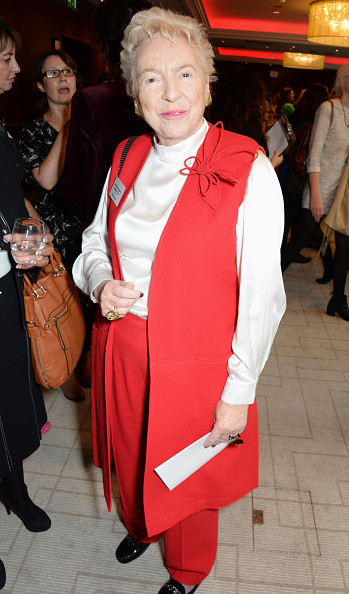International Women's day 2016: Pioneering British women in technology through the ages

This International Women's Day, IBTimes UK remembers the pioneers of British technology. These women chose to venture into an intrinsically male-dominated field, only to emerge triumphant in making an indelible mark in technology. They have paved the way for current and future women in one of the most competitive and evolving industries in the world.
1) Ada Lovelace
Ada Byron King (aka Ada Lovelace) is considered the first ever female computer programmer. Born in 1815 Lady Lovelace is widely acknowledged as the founder of scientific computing. Daughter of the illustrious romantic poet Lord Byron, Ada was raised by her mother, Anne Isabelle Milibanke, who was asked for a separation from Lord Byron, just weeks after giving birth to Ada. Lady Byron raised Ada and encouraged her to study mathematics and science, hoping to steer her daughter away from her father's poetic tendencies.
At 17, Ada met Charles Babbage a fellow mathematician and an inventor and went on to work with him on translating an article for Babbage's Analytical Engine. Ada ended up not only translating the article but also adding her own inputs on how the machine could work, incorporating codes to analyse symbols and letters and not just numbers. This later became her legacy to modern computer programming. The US Department of Defence, in 1980, named its latest computer language "Ada" in her honour.
2) Hertha Marks Ayerton
Hertha Marks Ayerton, born Phoebe Sarah Marks in 1854 was a British engineer, physicist, mathematician and inventor. At the age of nine she was sent to live with her aunt in London, where she was introduced to mathematics and science by her cousin. Ayerton adopted the name Hertha, after the Teutonic earth goddess, when she was in her teens, which symbolised her separation from religion, though she remained proud of her Jewish heritage.
In 1884, Ayerton patented her first invention, a line divider – a device that divides a line into equal parts. This was just the beginning for her. In 1899 Ayerton's paper – The Hissing of the Electric Arc was awarded by the Institution of Electrical Engineers (IEE) and later in the same year, she became the first women ever, to be elected as a member of the IEE. In 1899, Ayerton presided over the science section of the International Congress of Women and in 1900, she spoke at the International Electrical Congress in Paris. In 1904 Ayerton became the first women to be allowed to read a paper before the Royal Society. Her paper, The Origin and Growth of Ripple Marks was also published in the Proceedings of the Royal Society. She was also the first woman to be awarded the Hughes Medal in 1906, by the Royal Society for her work on the electric arc and her research on the motions of water and sand.

3) Stephanie Steve Shirley
Dame Stephanie "Steve" Shirley is a British businesswoman, a pioneer of British information technology and a noted philanthropist. Born in 1939, Shirley escaped the Nazi regime and arrived in England when she was five, accompanied only by her nine-year-old sister.
Fuelled by a desire to succeed and to help women gain employment, Shirley founded Freelance Programmers in 1962, with a capital of £6 ($8.5). Through her company, Shirley hoped to create part-time and full-time job opportunities for women. Adopting the nickname Steve to give her a leg up in the male-dominated industry, she went on to employ over 300 women and only three men (a ratio that was illegal until the Sex Discrimination Act was implemented in 1975). In the 25 years serving as the chief executive of her company, she made millions and then retired at the age of 60. Shirley is now an active philanthropist and has invested herself in helping those with autism.

4) Helen Sharman
Helen Patricia Sharman is a British chemist, who was the first Briton to go to space. Born in 1936 in Sheffield, Sharman went on to earn her PhD in chemistry from the University of London. She later served as a chemist for Mars confectionary and experimented with chocolate flavouring.
Sharman answered an advertisement for Project Juno (a collaborative effort between the then Soviet Union and Britain) to become the first British astronaut to travel to space. She beat 13,000 other applicants and in 1991 landed on the Mir space station, where she performed agricultural and medical tests and photographed the British Isles from space. In 2015, Sherman joined the Imperial College of London as Operations Manager for the Department of Chemistry. She has also been awarded an Honorary Fellowship by the British Science Association
5) Joan Clarke
Joan Clarke was an English cryptanalyst, best known for her work during World War II when she served as a code breaker with the team working on the Enigma Project. Thanks to the Oscar winning biopic of Alan Turing – Imitation Game, Clarke and her colleagues' work became well known to the public. Born in 1917, Clarke studied mathematics in Cambridge, only to be denied a full degree, as Cambridge only awarded those to male students back then.
Clarke was recruited to the Government Code and Cypher School where she befriended and worked with Alan Turing on his groundbreaking code process – Banburismus, the only woman to be included into the team. Although Clarke was inhibited from progressing further in her profession, her contribution to the Enigma Project has been widely acknowledged as significant. In 1947, she appointed a Member of the Order of the British Empire for her work in the Enigma Project, which helped defeat the Nazi regime. After the war, Clarke began working for the GCHQ.
6) Dina St Johnston
Born in 1930, Dina St Johnston was a British computer programmer who founded the very first British software house in 1959. At 17, she left school and joined the computer firm Elliot Brothers, where she learnt how to program.
Johnston soon noticed that programs were not being sold to the industry by any individual or group of programmers. Capitalising on the gap in the market, she founded the Vaughan Programming Services, a company that went on to develop software for the BBC, BAA, British Rail and Unilever. She was also the woman behind real-time passenger information systems, which preceded the traditional railway timetable boards in stations across England. She developed flight simulators for the RAF. Johnston's company was the first software firm in the UK to function independently and that was not a part of a computer manufacturer, a computer bureau, a consultancy organisation or a users' group.
7) Sophie Wilson
Sophie Wilson is a British software engineer and a computer scientist. She was born in 1957 and studied computing at Cambridge. While she was still at university, Wilson developed a microcomputer that could electronically control and dispense feed for cows.
Wilson joined Acorn Computers in 1978 and designed the much heralded Acorn Microcomputer. In 1981, she redesigned the Acorn Atom's programming language and converted it into Acorn Proton. It was this microcomputer that secured Acorn Computers their notable contract with the BBC. In 1983, Wilson began developing an instruction set for the Acron RISC Machine (ARM). Her innovative processor type quickly became the most successful IP core and went on to be used in most modern day smartphones. In 2013, Wilson was elected as a Fellow of the Royal Society.
8) Karen Sparck Jones
Karen Sparck Jones was an English computer scientist. Born in 1935 she studied history in Cambridge and briefly worked as a teacher, before moving to the field of computer science. In 1974, she joined Cambridge's Computer Laboratory where she worked on information retrieval and natural language processing. In 1972, she wrote a paper in which she highlighted the significance of inverse document frequency (IDF) in information retrieval. To this day, IDF is still used in most search engine operations. Jones was the first woman to be awarded the prestigious Lovelace Medal by the British Computer Society.
9) Siobhan Reddy
Siobhan Reddy is a game developer who was born in South Africa. She is the co-founder and studio director of Guildford based Media Molecule, famed for producing the popular game Little Big Planet.
Reddy moved to England at 18 where she began working as a production assistant and worked her way up to become the studio director at Media Molecule. In 2009, she was awarded the Production Award by the first Microsoft Women in Gaming Awards hosted. She was later awarded the Innovator Award by the same in 2014.
10) Wendy Hall
Dame Wendy Hall is a British computer scientist, widely regarded as one of the leading authorities in the field. Born in 1952, Hall studied mathematics at the University of Southampton, where she later returned to teach.
Hall was one of the founding members of the Web Science Research Initiative. Her team invented the Microcosm hypermedia system that predates the World Wide Web and set the base for its development. Hall was appointed the president of the Association of Computing Machinery in 2008 — the first non-American to ever be appointed in the position. In 2000, she was appointed Commander of the Order of the British Empire and was promoted to Dame Commander in 2009. She has also been elected as a member to the Fellow of the Royal Academy of Engineering, a Fellow of the British Computer Society, a Fellow of the Institution of Engineering and Technology and in 2009, she was elected a Fellow of the Royal Society.
© Copyright IBTimes 2025. All rights reserved.






















